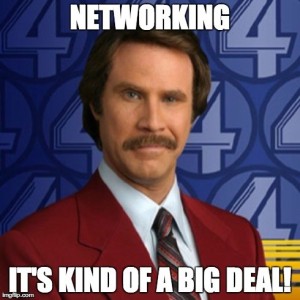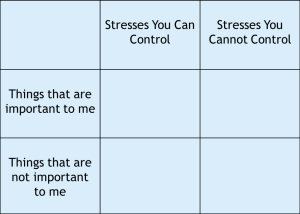What is Networking, and How do I do it?
Written By: Katy Hinz, Office for Student Engagement
Networking is one of those intimating words, but really what it means is connecting to people to build professional relationships. Does that sound less scary? I hope so. As CLA Career Services puts it, “When you meet new people and discuss mutual interests or goals, you’re networking spontaneously. You’ve probably been networking for years without realizing it.”
So, why network? According to the U.S. Bureau of Labor Statistics, 70 percent of all jobs are found through networking.

Image source: www.wrightoncomm.com
How do you find people to network with?
GoldPASS: GoldPASS, a free database for U of M students of jobs & internships, now offers a professional networking database. Using keywords or your major you can find professionals that work in the fields most relevant to you. On Goldpass there is also an “employer directory” where you can find a lot of contacts at companies you may be interested in.
Linkedin: Linkedin is the world’s largest online professional networking website, and since networking is so essential to professional success, we’ve made creating a profile one of SELP’s requirements. To best utilize Linkedin for networking, start by connecting with people you already know: your work supervisor, professors, co-workers, friends, family members, advisors, coaches, former supervisors, neighbors. Even if the people you know aren’t in fields or jobs you are interested in, they are still valuable to connect with as you never know who they are connected to and how they could help you.
Next, Join groups, such as your college’s group, the University of Minnesota Alumni Association, SELP, and groups related to your field of interest. Once you are in a group go to the members tab and use the search function, you can search any term you’d like, such as by company name or job title to find individuals to connect with.
Tip: when you request to connect with someone on Linkedin write a personal message and explain why you want to connect, especially if it is someone you don’t know. For example write, ‘I see that you graduated from the U of M, I am a current student there and am really interested in nonprofit management too. I was hoping we could connect on Linkedin, thank you for considering.’

Image source: styleresumes.com
Career Fairs and Events: There are several career fairs hosted throughout the year, including the U of M Job & Internship Fair taking place on Feb 20, 2015 where you have the opportunity to meet with a lot of employers during a short period of time. There are also career panels and company information sessions hosted quite often, go to the events page of GoldPASS to stay informed of these opportunities.
Student Groups & Professional Organizations: Joining a student group related to your professional interest is a great way to network, not only will you meet other students with a shared interest but often these groups offer networking events and bring in guest speakers. You can find student groups that match your interests here. Also, chances are that your field of interest has one or more professional organizations and these groups often have student (discounted) memberships and offer mentoring and professional development opportunities. Find professional organizations here.
Mentor Programs: Many colleges have alumni mentor programs that you can get involved with, find out if your college has a program and how to get involved here. These programs offer a structured way to get connected to professionals.
Informational Interviewing
Once you have contacts one of the best ways to build your professional network is to conduct informational interviews. Basically an informational interview is having a conversation with someone in a field or organization that is of interest to you. It may be nerve-racking to ask someone to do an informational interview, but most of the time people love to talk about their work and are eager to help. Think about it this way, if someone from your high school contacted you and wanted to ask you some questions about the U of M wouldn’t you say yes?
How do you set up an informational interview?
Contact the person you are interested in meeting with via phone, email, or Linkedin. Be sure to state how you got their information. Introduce yourself, such as: your major, year in school, and professional interests. Ask them if they would be willing to do an informational interview with you and include what it is you would like to discuss, such as: their career path, their current job, advice they have for getting experience in the field, etc.
What to do at the informational interview
- Dress business casual (dress shirt & dress pants) and arrive 10 minutes early to your appointment. click here and here for examples of professional dress.
- Come prepared with some questions based on the research you did on them and their organization, such as: what are the rewards and challenges of this field, how would you describe this organization’s structure, what is a recent project you have worked on. Always ask if there is anyone else they would recommend you could talk to, this is how your network really starts to build! Click here for more question examples.
- Bring a copy of your resume—your resume will help them get to know you a little better and you may have the opportunity to ask for their feedback.
What to do after the informational interview
- Send a thank you note that states what was helpful from the meeting.
- Contact the people they refer you to and keep in touch with them.
- Reflect on what you have learned and how you can best use the information.
- Stay in touch! Send occasional updates, ask them further questions, send articles that you think they might be interested in.





